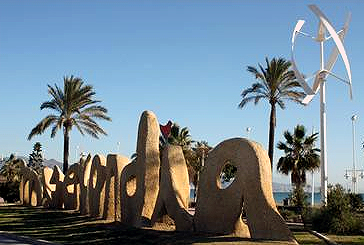One of the oldest cities in the world is now in the second phase of deploying a next-generation smart grid. Málaga, Spain, has a history that spans about 2,800 years, dating back to the Phoenicians, who settled there in 770 BC. Over the past four years, the Smartcity Málaga pilot project has demonstrated the feasibility of a new energy management model for cities—meeting the municipality’s initial targets of 20 percent annual energy savings, a 6,000-ton-per-year reduction in CO2 emissions and enhanced integration of renewables within the distribution grid.
The project is being spearheaded by Endesa, S.A., the largest electric utility company in Spain. The firm, a majority-owned subsidiary of the Italian utility company Enel, has 10 million domestic customers.

Above right, a wind microturbine streetlight adds a technological touch to a historical city (courtesy of Endesa, S.A.).
Testbed in Málaga
During the first $40.4 million phase of implementation of the Smartcity Málaga pilot project launched in 2009—the first of its kind in Spain—a consortium of 11 companies spearheaded by Endesa deployed state-of-the-art smart metering, communications systems, network automation, generation and storage, and smart recharging infrastructure for electric vehicles (EVs). Over 17,000 smart meters were installed, and 50 users were provided with energy efficiency solutions for their homes.
Over 10 SMEs and emblematic buildings in the area also have installed energy efficiency solutions that enable them to monitor consumption and control some of their charging.
In addition, the city of Málaga has become the Enel Group's testbed for the development of smart grid distribution technologies. Advanced automation systems have been installed in more than 20 transformer centers—and 72 centers are linked via a broadband powerline communications (PLC) network, which connects all points of the electricity grid to the Network Control Centre, where these assets are monitored.
The zone has 11MW of renewable generation capacity, which comprises a number of roof-mounted photovoltaic installations spread throughout the city, a co-generation facility, vertical-axis wind turbines, and generation systems integrated in street lighting. All of these generation systems, combined with two battery-based storage facilities, are being used to manage consumption more efficiently.
Nearly 100 street lights have been replaced with new lamps featuring energy efficient technologies (including LED and halogen lighting), that are managed via a point-to-point control system. A small network of recharging points also is being used to test V2G (Vehicle to Grid) technology.
Phase Two
During the next phase of Smartcity Málaga, the municipality will employ the technologies installed during Phase One to facilitate the testing of new equipment, operating models and consumption management systems. Research will focus on analysis of efficiency indicators; advanced grid operations; remote meter management services; cyber-security; energy-saving measures for residential and large customers as well as buildings; and integration of renewables, storage and e-mobility within the city grid.
Thanks to the project, the city will become an international benchmark for distribution technologies within the framework of the Enel Group’s Research Development and Innovation (RDI) strategy.
Enel has been a global pioneer in the development of smart cities and already has projects underway in Spain (Málaga as well as Barcelona), Italy (Bari, Genoa, Turin, Cosenza and L’Aquila) and Latin America (Cidade Inteligente Búzios in Brazil, and Smartcity Santiago in Chile). What’s more, Enel is working on two smart grid models on the islands of El Hierro and La Graciosa in Spain, with a view toward establishing systems that help isolated island systems become energy self-sufficient.
Edited by
Alisen Downey